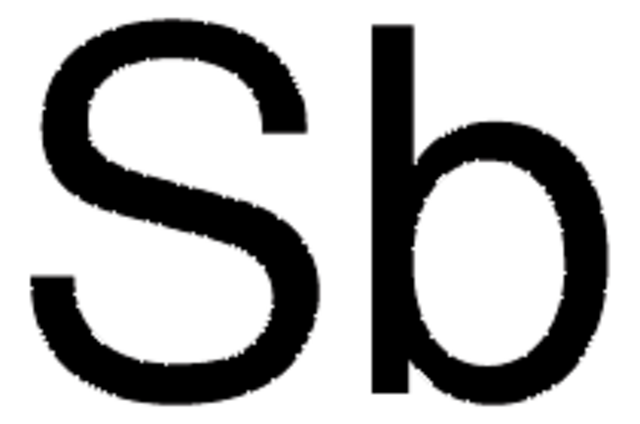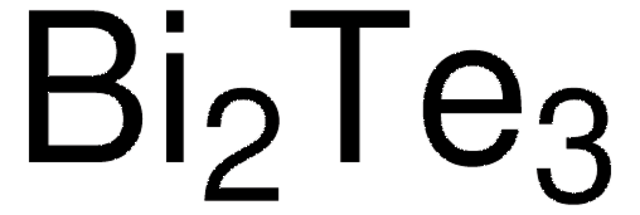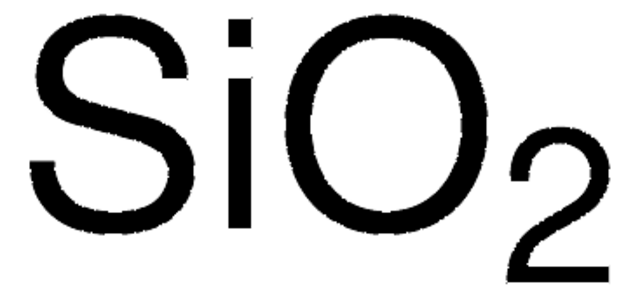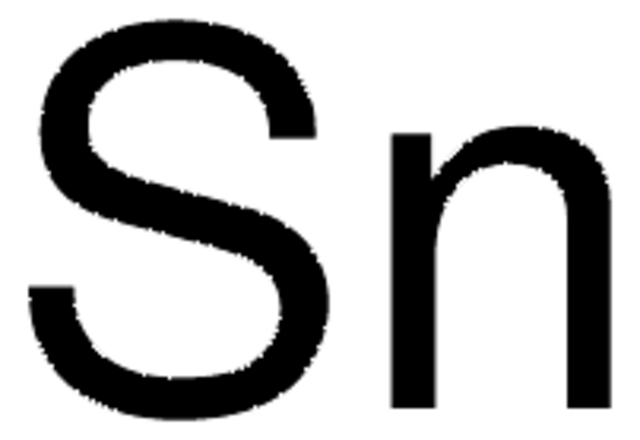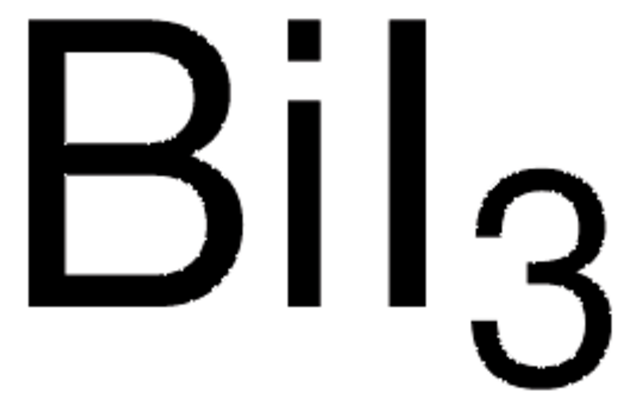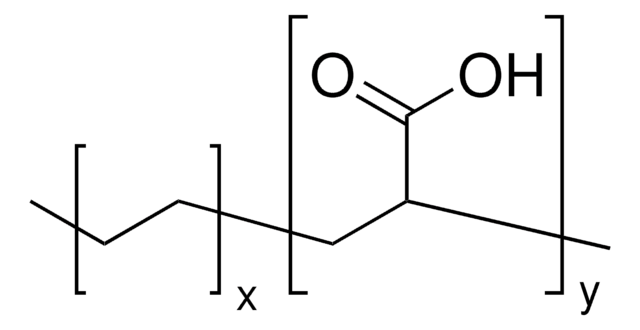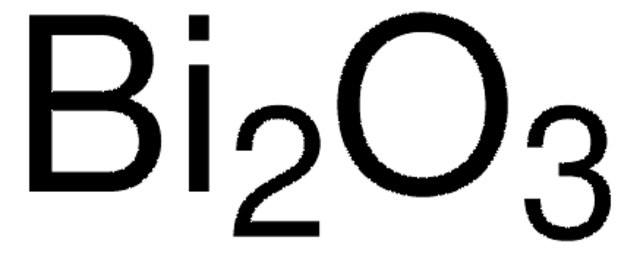264008
Bismuth
powder, −100 mesh, ≥99.99% trace metals basis
Synonym(s):
Bismuth element, Bismuth-209
About This Item
Recommended Products
vapor pressure
<0.1 mmHg ( 20 °C)
Quality Level
assay
≥99.99% trace metals basis
form
powder
resistivity
129 μΩ-cm, 20°C
particle size
−100 mesh
bp
1560 °C (lit.)
mp
271 °C (lit.)
density
9.8 g/mL at 25 °C (lit.)
SMILES string
[Bi]
InChI
1S/Bi
InChI key
JCXGWMGPZLAOME-UHFFFAOYSA-N
Looking for similar products? Visit Product Comparison Guide
Related Categories
signalword
Danger
hcodes
Hazard Classifications
Flam. Sol. 1
Storage Class
4.1B - Flammable solid hazardous materials
wgk_germany
WGK 3
flash_point_f
Not applicable
flash_point_c
Not applicable
ppe
Eyeshields, Gloves, type N95 (US)
Certificates of Analysis (COA)
Search for Certificates of Analysis (COA) by entering the products Lot/Batch Number. Lot and Batch Numbers can be found on a product’s label following the words ‘Lot’ or ‘Batch’.
Already Own This Product?
Find documentation for the products that you have recently purchased in the Document Library.
Customers Also Viewed
Articles
Permanent magnets are an essential technology for energy conversion. Motors and generators are used to convert energy between electrical and mechanical forms.
Our team of scientists has experience in all areas of research including Life Science, Material Science, Chemical Synthesis, Chromatography, Analytical and many others.
Contact Technical Service
